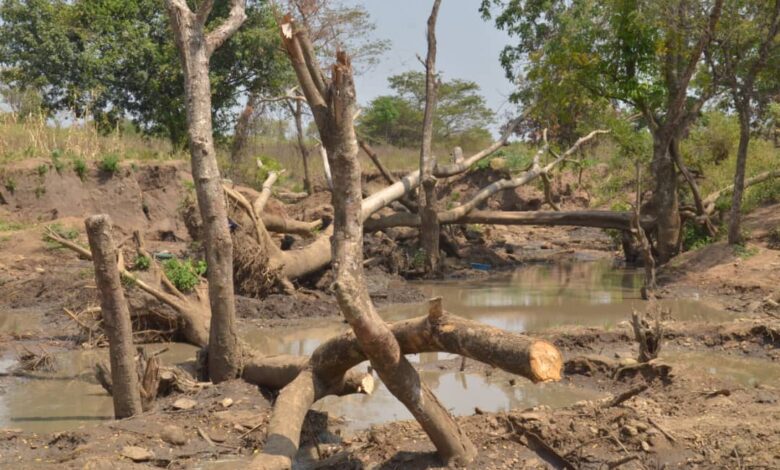West Nile at a Crossroads: Transformative Climate Plans Needed

Op-Ed: While Uganda natural climatic is moderate, the country has also been experiencing increased frequency and severity of climate change.According to Advocates Coalition Development and Environment (ACODE) studies, Uganda is the 40th most vulnerable nation to climate change due to its high dependence to natural resources and the region of West Nile is particularly one of the regions more at risk with vulnerable groups such as women, youth and refugees facing the greatest climaticchallenges.
The climatic conditionsare causing moreextreme weather eventsincluding droughts, floods, mudslides and landslides which have put people’s lives at stake. The West Nile region has not been spared from these climate effects which are partly being blamed for the growing of food insecurity, poor water quality and the ecosystem health of the country’s citizenswhere families are struggling to get enough food, water and pastures for their animals.
According to the census report released last year from the Uganda Bureau of statistics (UBOS), food crisis across Uganda more especially in West Nile menace due to climate change. The reports show West Nile as one of the regions in the country with the highest percentage of the households experiencing extreme food insecurity and water scarcity. In West Nile, farmers who rely heavily on rain fed-agriculture are vulnerable to the region’s increasingly harsh climatic conditions including prolonged drought and heavy downpours which have exacerbated food insecurity
Climate change in West Nile, materializes in an increase in average temperature and heatwaves, more unpredictable rainfall and increased crops and land exposure to drought. Over the past 20 years, Uganda has experienced more frequent and longer-lasting drought conditions which has affected many lives of people.
It is noted that the livelihoods and food security of people in West Nile are highly dependent on rain-fed subsistence farming which is vulnerable to shocks and adverse weather events related to climate change and climate variability.
Droughts in West Nile have already resulted in scarcities on local food markets and inflated the prices of food staples. Even people with access to normally fertile lands have faced severe climate driven variability in recent years contributing to increasing livelihood insecurity.
Moreso, forestry resources in West Nile are a source of tension and potential conflict because trees are being cut down at an unsustainable rate due to the spike in demand for energy sources driven by the rapid population growth and the vast majority of refugee and host population households who still rely on wood as primary cooking fuel.
This problem is particularly critical in rural areas and around refugee settlements where forestry management is weak and unsustainable. A scarcity of forestry products increases the risk of tensions and conflict around the competition to control and access these resources.
Notably, most farmers in west Nile have lost hope for the better yields in this season due the unexpected drought caused by massive destruction of forests which leads to the reduction in food security, decline in the quantity and quality of water and degradation of ecosystems and negative impacts on health, settlements and infrastructure.
Uganda’s strategy for sustainable development is to explore all the available options of accessing clean energy, increase the forest cover and SDG 13 calls up countries to take an urgent action to combat climate change and agriculture is the common thread which holds the 17 SDGs together.
The west Nile region, like many other parts of the country affected by climate change, needs targeted and comprehensive interventions such as strengthening climate resilient agriculture through introducing drought-resistant crops, agroforestry and sustainable farming techniques to help farmers adapt to erratic weather patterns.
The government needs to improve access to clean energy by expanding solar access and promote the use of biogas for homes schools and businesses to reduce reliance on deforestation for firewood and charcoal.
In addition to the above, there is a need to implement tree planting initiatives in West Nile to restore degraded landscapes and conserve wetlands as they act as natural buffers against floods and drought, strengthen social protection systems, promote sustainable livelihoods and enhance natural resource management among others. This will help the people in west Nile as well as the country to build resilience and reduce vulnerability to climate change.
The author is Olive Atuhaire, AFIEGO
Disclaimer: As UG Reports Media LTD, we welcome any opinion from anyone if it’s constructive for the development of Uganda. All the expressions and opinions in this write-up are not those of UG Reports Media Ltd. but of the author of the article.
Would you like to share your opinion with us? Please send it to this email: theugreports@gmail.com.






